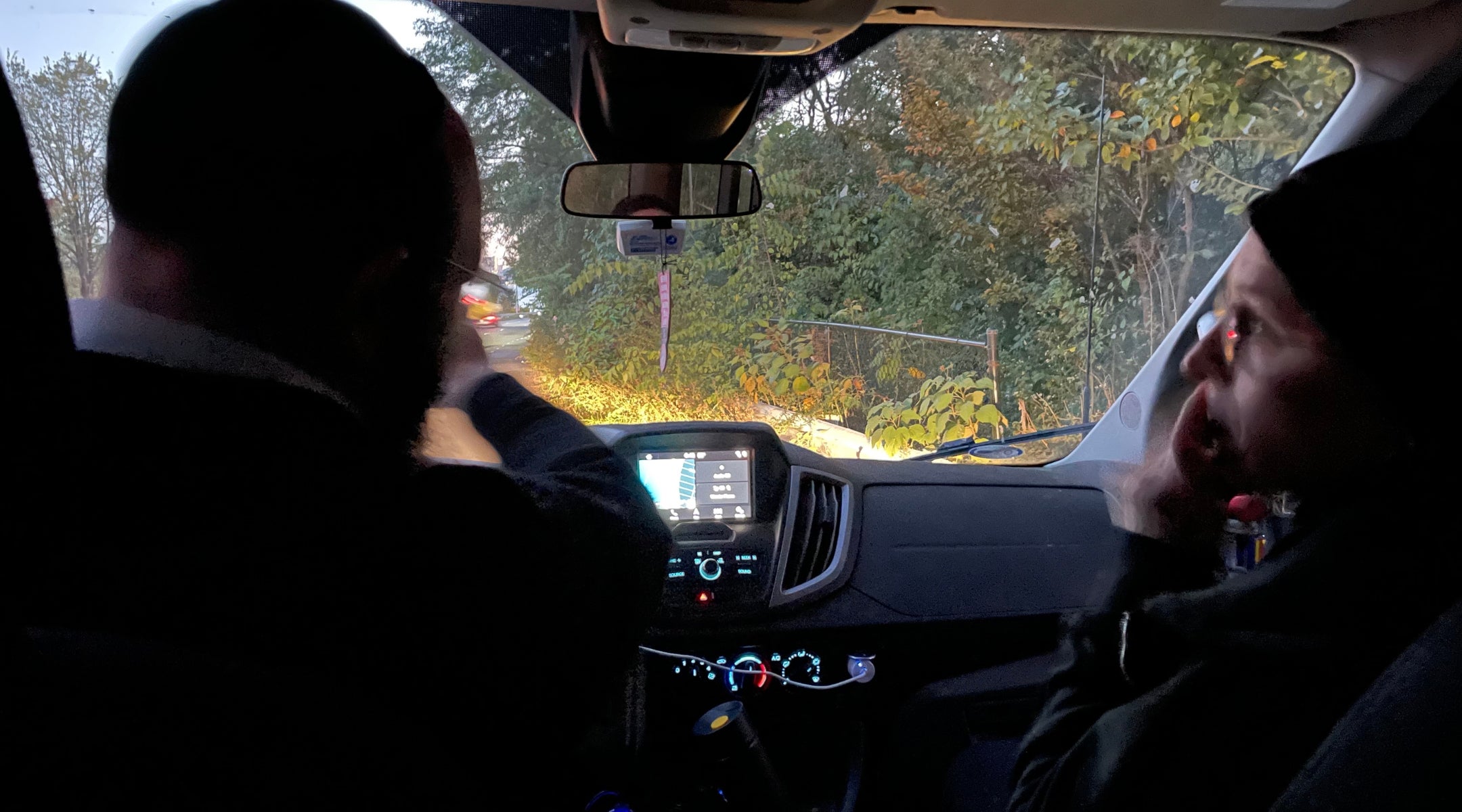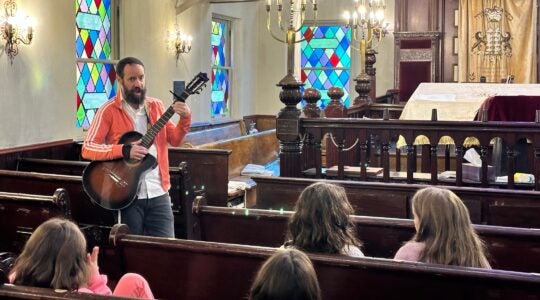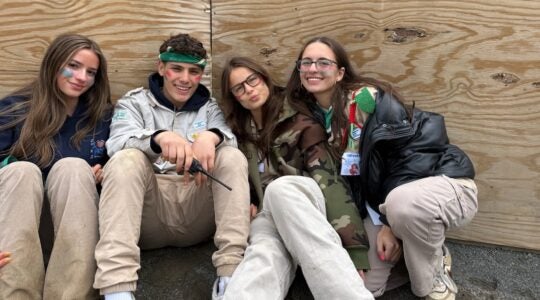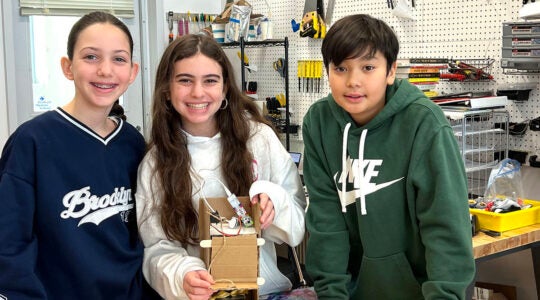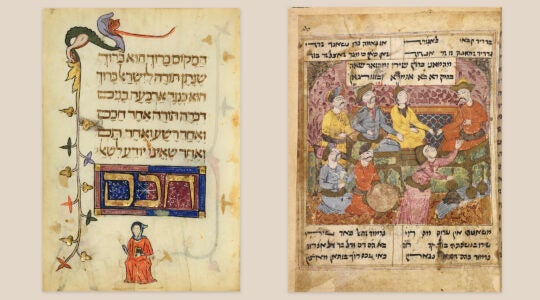Around 6:15 a.m. on a recent Thursday, Rabbi Moshe Tauber parked his van in the merge lane of the Henry Hudson Parkway at 72nd Street. He turned on his hazard lights and ran out of the vehicle with a flashlight. His wife, Chaya, sitting in the passenger seat, watched anxiously.
Tauber, 51, turned his head upward, shined his flashlight on the nylon fishing wire strung up 30 feet from the ground between two poles, and ran back to the car. All clear — the boundary was unbroken.
For the past 25 years, this process has been the rabbi’s routine on both Thursday and Friday mornings: leaving his home in Monsey, an Orthodox enclave in Rockland County, hours before sunrise in order to circumnavigate the entire island of Manhattan. His mission: to check every part of the borough’s eruv — the symbolic boundary, marked by strings and other man-made and natural elements, inside of which observant Jews may carry objects like food, keys and even babies on Shabbat and certain holidays.
Maintaining the eruv, which must be unbroken to be considered kosher, has been Tauber’s job since 1999. Tauber says it doesn’t make sense for someone else to sub in for him, simply because he knows the eruv so well and can do it so efficiently, after having inspected it for so many years. With Chaya’s approval, he even missed the early-morning birth of his 13th and youngest child, now 7, to check the eruv on a Friday morning. He immediately went to the hospital to visit mother and baby after his inspection was done.
“I don’t know if I can explain what I like in this job,” Tauber said. “I like it.”
Now, for the first time, the eruv inspector is getting some high-tech assistance.
Installed in August, a new sensor system created by technology entrepreneur Jerry Kestenbaum — also the creator of the residential building software company BuildingLink — magnetically snaps onto multiple locations of the eruv. The 142 sensors detect changes in the angle of the wire and send a signal to a receiver held by Spectrum on Broadway, the lighting and electrical company responsible for maintaining the line per Tauber’s instructions. The sensors themselves are battery-operated and meant to last for six to 10 years, sealed in a waterproof case.
“It gives me more comfortability,” Tauber said. But he’s not planning on ceding oversight entirely to the machines, saying, “I know I need to check because the sensors are not 100%.”
The sensors mark the first major innovation to Manhattan’s biggest eruv, installed in 1999 after Adam Mintz, then the rabbi of Lincoln Square Synagogue, requested its installation to surround his Upper West Side neighborhood. (Prior to the borough-wide eruv, different parts of the city each had their own, but travel between them while carrying anything was prohibited on Shabbat.)
According to Jewish law related to Shabbat, no items can be carried outside the home on what is supposed to be a day of rest and prayer. Recognizing this as a potential burden, rabbis in the Talmudic era devised a workaround: The boundary defined by the eruv would extend the “private” zone where carrying is permitted. Despite some community objections — sometimes from Jews and non-Jews who worry that the eruv will change the “character” of their neighborhoods, or civil libertarians who worry about the blurring of church and state — nearly every observant community, from big cities to small towns, is surrounded by an eruv.
The Lincoln Square eruv has expanded multiple times since 1999, now encompassing most of Manhattan, from 145th Street between Riverside Drive and Malcolm X Boulevard at its northernmost point, roughly down FDR Drive all the way to the bottom of Manhattan at the South Street Ferry, and back up the Henry Hudson Parkway.
In the years since he became its inspector, Tauber’s dedication to the eruv has been unflagging. He made sure it was unbroken after 9/11 (it didn’t extend all the way downtown at the time), after the 2003 citywide blackout, after Hurricane Sandy in 2012 and throughout the COVID-19 pandemic. In Tauber’s 25 years of inspections, the eruv has only been down once over a Shabbat, during a snowstorm in 2010.
In addition to checking the eruv twice a week, Tauber helps his wife run a daycare, and he teaches boys at a yeshiva. He hasn’t taken a vacation longer than a few days for a quarter century.
Chaya Tauber said she has a theory about why he likes the eruv job so much. “[It’s] many hours of a busy week — he has more jobs, it’s not the only job — that he can be by himself,” she said.” Quiet time. I think he likes the traveling, also.”
Just two weeks ago, he helped establish an eruv around Columbia University Medical Center in Washington Heights and the surrounding apartments. Eventually, the plan is to connect it to the main Manhattan eruv — and potentially to other smaller eruvs in Upper Manhattan. There, smaller eruvs serve portions of Washington Heights with many observant Jews, including one that is home to the Orthodox flagship Yeshiva University.
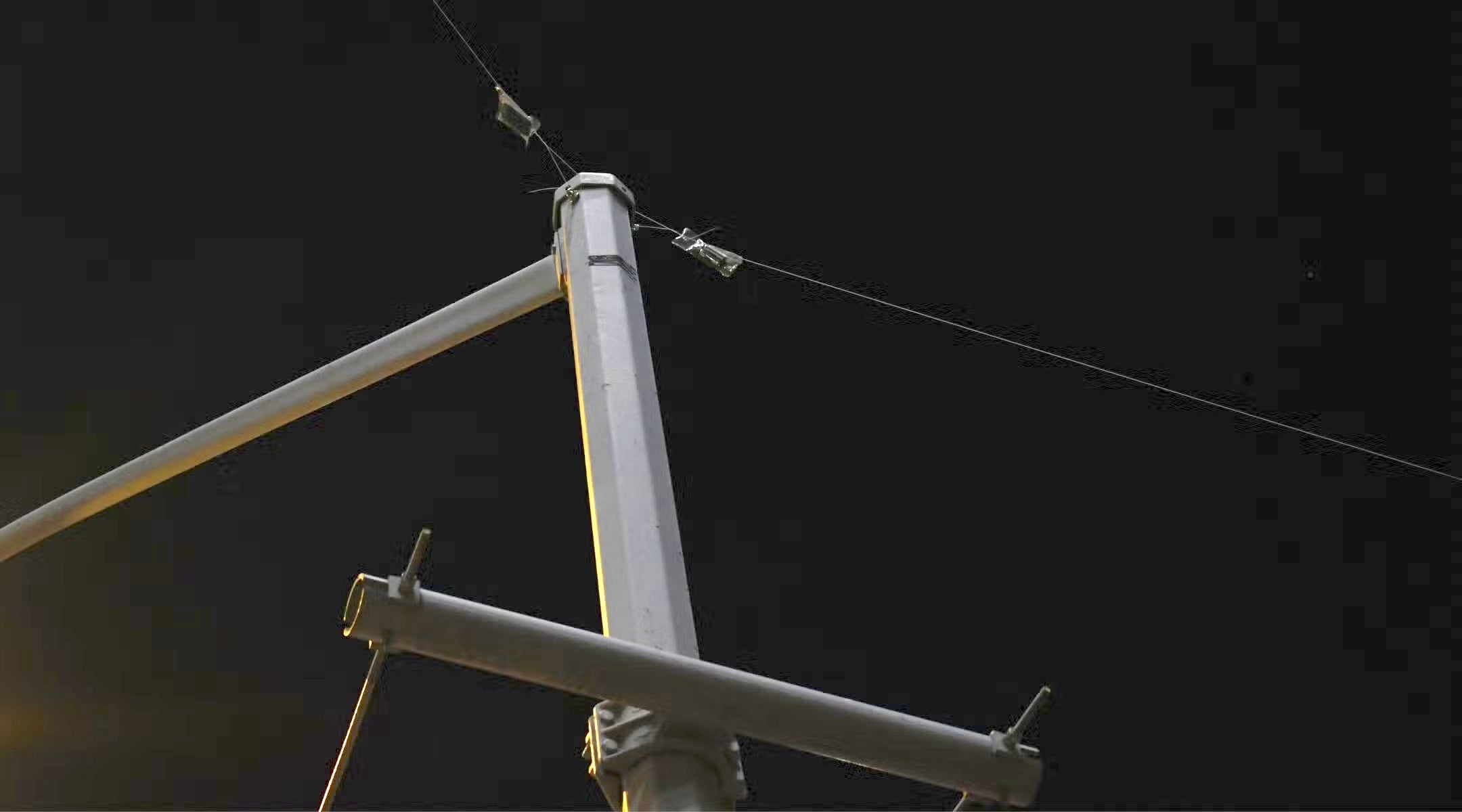
Newly added motion sensors, encased in plastic, are clipped onto a part of the eruv wire near the Manhattan Bridge. (Jackie Hajdenberg)
Kestenbaum, whose new business, Aware Buildings, provides sensors for home security, said the idea for the electronic eruv technology came about during a conversation with Mintz, now the rabbinic leader of Kehilat Rayim Ahuvim (The Shtiebel) on the Upper West Side at the Marlene Meyerson JCC.
“I was saying to him that the sensors can be applied to many, many things that we’re used to doing manually,” said Kestenbaum, whose wife converted to Judaism under Mintz’s supervision.
“It’s a complicated eruv where the deployed environment changes,” Kestenbaum explained. “It’s not [like] in the suburbs, where the outline of the eruvs remains constant. Things go wrong. You’ve got scaffolding that gets put up. You’ve got other things that happen. The weekly eruv job is not just fixing, sometimes it’s rerouting.”
The complications are what gets Tauber out the door around 3:30 a.m. on inspection days. Not only does he beat rush hour, but once the sun begins to come up, it’s far more difficult to see the wire.
Now, the sensors can help him locate the wires more easily — and safely. “I used to walk [out of the car] because I couldn’t see it without the sensors,” Tauber said, pointing to a section near the Manhattan Bridge. “See the sensors? You don’t have to see the actual line.”
Tauber has been surprised by the willingness of various city agencies and construction crews to accommodate him in his unusual line of work.
“Even though we are Jewish, and we know we are not the most liked people here, but I never, ever had a problem with any organization or department officials, or even a construction company — they always come across,” he said. “They always look like they admire something which is religious.”
For Chaya Tauber, the early mornings and constrained vacations are worth it because of the way her husband’s work allows Manhattan Jews to observe one major law of Shabbat with ease.
“There is so much less desecration of Shabbos,” Chaya Tauber said, adding that when the eruv is up, “at least they’re not transgressing on this particular halacha. That makes this job such a responsibility.”
The New York Jewish Week brings you the stories behind the headlines, keeping you connected to Jewish life in New York. Help sustain the reporting you trust by donating today.
